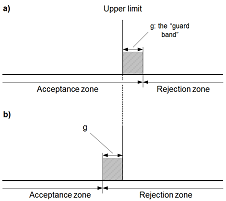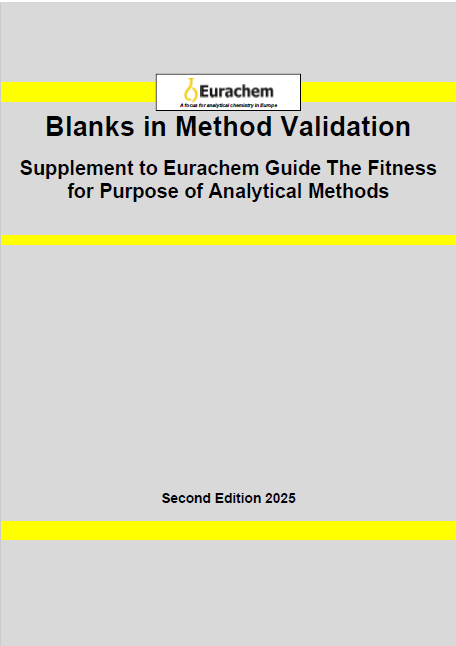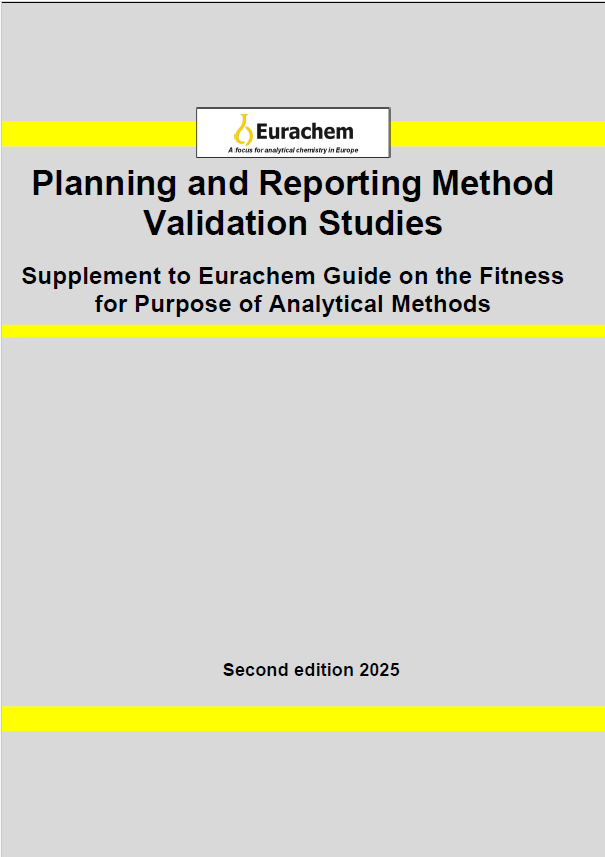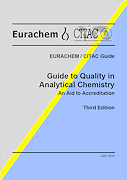Use of uncertainty information in compliance assessment. (2nd ed. 2021)
Content
 In order to decide whether a result indicates compliance or non-compliance with a specification, it is necessary to take into account the measurement uncertainty associated with the result. This guide provides guidance on how uncertainty may be taken into account in deciding compliance with a limit.
In order to decide whether a result indicates compliance or non-compliance with a specification, it is necessary to take into account the measurement uncertainty associated with the result. This guide provides guidance on how uncertainty may be taken into account in deciding compliance with a limit.
The guide is applicable to decisions on compliance with regulatory or manufacturing limits where a decision is made on the basis of a decision rule, together with a measurement value and the associated measurement uncertainty.
The guide includes a discussion and general recommendations, including the use of "guard bands" to improve the probability of correct acceptance or correct rejection. This is followed by more detailed guidance on establishing rules for interpretation and by several examples.
This second edition has been amended to take into account the developments in other international guides and Standards, including ILAC G8, "Guidelines on Decision Rules and Statements of Conformity" and JCGM 106, "Evaluation of measurement data – The role of measurement uncertainty in conformity assessment".
Major changes in this second edition are:
- the idea of an acceptance limit is introduced;
- decision rules that provide for conditional or inconclusive results are introduced (sometimes called “non-binary” decision rules);
- use of the lognormal distribution is introduced for some asymmetric cases;
- an Annex has been added to introduce the ideas of "global" and "specific" risks.
Availability
The guide may be downloaded from this website at no cost.
- Download the Guide in English (PDF, 1.2 Mb) (Published* 2021-04-29)
- Download the Guide in Farsi (PDF, 1.7 Mb) (Published 2021-12-09)
- Download the Guide in Russian (PDF, 837 kB) (Published 2023-02-13)
- Download the Guide in Ukrainian (PDF, 986 kB) (Published 2022-05-30)
* Publication dates are dates of publication on this website.
Translation
Translation into other languages is permitted for members of Eurachem. Other offers of translation should be directed to the Eurachem Secretariat for permission. The Eurachem policy on maintenance and development of Eurachem guidance, available on the Policies page, gives further information on translation.
Note: The First edition of this guide is available in English, Farsi and Portuguese.
Citation
This guidance should be cited* as
"A. Williams and B. Magnusson (eds.) Eurachem/CITAC Guide: Use of uncertainty information in compliance assessment (2nd ed. 2021). ISBN 978-0-948926-38-9. Available from www.eurachem.org."
*Subject to journal requirements.
Previous editions
Earlier editions of this guide are available in the publication archive on this website.


 Blanks are an important tool and are used in the determination of most performance characteristics during a validation process. They are also often included in each analytical run during routine use of the measurement procedure. There are many different types of blanks and the analyst must consider which blanks to include during preparation of the validation plan.
Blanks are an important tool and are used in the determination of most performance characteristics during a validation process. They are also often included in each analytical run during routine use of the measurement procedure. There are many different types of blanks and the analyst must consider which blanks to include during preparation of the validation plan. Planning is an essential stage in the validation process. Before starting any experimental work, the aim should be to have a clear plan for the entire validation study. This should cover the performance characteristics that will be studied, the target value for each performance characteristic, the materials that will be analysed, the level of replication and order of the experiments, any statistical analysis that will be used, and how the method will be judged as being fit for purpose.
Planning is an essential stage in the validation process. Before starting any experimental work, the aim should be to have a clear plan for the entire validation study. This should cover the performance characteristics that will be studied, the target value for each performance characteristic, the materials that will be analysed, the level of replication and order of the experiments, any statistical analysis that will be used, and how the method will be judged as being fit for purpose. The aim of this guide is to provide laboratories with guidance on best practice for the analytical operations they carry out. The guidance covers both qualitative and quantitative analysis carried out on a routine or non-routine basis. A separate guide covers research and development work (
The aim of this guide is to provide laboratories with guidance on best practice for the analytical operations they carry out. The guidance covers both qualitative and quantitative analysis carried out on a routine or non-routine basis. A separate guide covers research and development work (